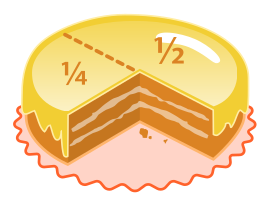Self Esteem in school is effected by a multitude of different sources; teachers, peers, parents, appropriate placement, school philosophy, the student's level of self-efficacy, reinforcements... the list goes on.Mathematics for the elementary student can bring about a variety of feelings. Math can be intimidating, it can be exciting. Kids can be stimulated or bored, interested and curious or impartial and distracted. Self-confidence can contribute greatly to which way (positive or negative, greater than or less than) a student views math.
As a student it is important to have trust in your teachers as well as your parents, they are there to help you and often know what is best in regards to learning for your future. It is not acceptable, though, to rely on these adults to do the thinking or the work for you. You are your greatest advocate in your education, ask for what you need! Do not be afraid to ask questions, request extra help, or admit if you do not understand.
Another important step to take for success in mathematics and school in general is to learn to become an effective student. Children are not born with good study habits, they are developed. A great level of motivation to learn pre-algebra is not an inherited trait, it is an encourage and rewarded one. You do not have a genetic predisposition toward liking math. I know many that would argue this, citing that intelligence can be inherited and left-brainers are simply better at math. I agree, but I also believe that anyone can achieve success and enjoyment of mathematics. This success takes hardwork, patience, dedication and, most importantly, willingness to learn and to ask questions. Set goals for yourself, treat yourself to a small prize for success, but do not punish yourself for failure. Math proficiency comes with practice, try and try again!
In this blog I have, so far, provided you with a wealth of resources for learning and practice, but there are many more out there. If you are a visual learner, Khan Academy provides videos and easy to understand explanations on thousands of academic topics. Many of the websites I have provided have excellent manipulative components that help the more hands-on learners. There are math Podcasts available for those who learn best by listening, sometimes repeatedly, to verbal explanations of topics. My advice is to take advantage of a sampling of all kinds of teachings. Even if you consider yourself a hands-on learner, reinforcing ideas by watching it done by others certainly cannot hurt!
